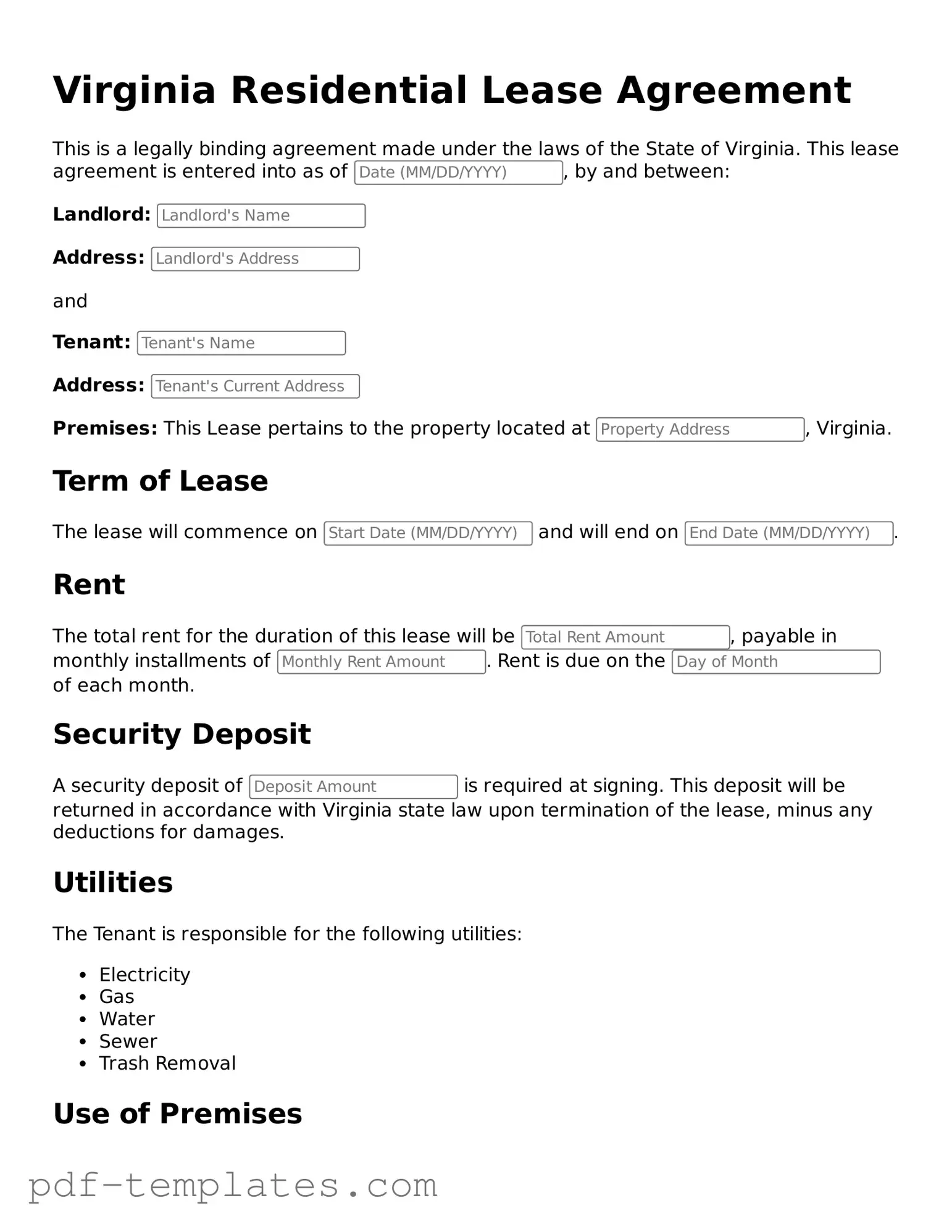The Virginia Residential Lease Agreement is similar to a Commercial Lease Agreement, which is used for renting business properties. Both documents outline the terms and conditions of the lease, including the duration, rent amount, and responsibilities of both parties. However, while a residential lease focuses on living spaces, a commercial lease addresses the unique needs of businesses, such as zoning laws and property use restrictions. Understanding these distinctions is crucial for landlords and tenants alike.
Another document that shares similarities is the Month-to-Month Rental Agreement. Like the Virginia Residential Lease Agreement, this document establishes the terms of renting a property. However, the month-to-month agreement offers flexibility, allowing either party to terminate the lease with short notice. This type of lease is ideal for those who may not want a long-term commitment, providing a more adaptable living arrangement.
The Sublease Agreement is also akin to the Virginia Residential Lease Agreement. This document allows a tenant to rent out their leased space to another individual, known as a subtenant. Both agreements require the original tenant to remain responsible for the lease terms, ensuring that the landlord's interests are protected. This arrangement can be beneficial when a tenant needs to temporarily vacate their home but wants to maintain their lease.
For those interested in securing a lease, completing a Room Rental Agreement form is critical. This document helps to clarify the terms under which living arrangements are made, ensuring both parties are aware of their rights and responsibilities. To get started, you can find the form by visiting this essential Room Rental Agreement template.
A Roommate Agreement bears similarities as well. While it may not be a formal lease, it outlines the expectations and responsibilities shared between roommates living in the same rental property. Both agreements emphasize the importance of clear communication and mutual understanding, helping to prevent conflicts and ensure a harmonious living environment.
The Lease Option Agreement is another related document. This unique arrangement allows a tenant to lease a property with the option to purchase it later. Like the Virginia Residential Lease Agreement, it details rental terms but also includes provisions for the potential sale. This can be an attractive option for tenants who wish to buy a home but need time to secure financing or improve their credit.
The Rental Application is closely related as well. While it is not a lease, it serves as a preliminary step in the rental process. This document collects essential information about potential tenants, such as their rental history and financial status. A thorough rental application helps landlords make informed decisions, ensuring that they select responsible tenants who are likely to adhere to the terms of the lease.
The Eviction Notice is another document that connects to the Virginia Residential Lease Agreement. While it is a more serious step in the rental process, it outlines the reasons a landlord may terminate a lease due to tenant violations. Understanding the eviction process is essential for both landlords and tenants, as it clarifies the legal rights and responsibilities involved in a rental agreement.
Lastly, the Property Management Agreement shares similarities with the Virginia Residential Lease Agreement. This document outlines the relationship between a property owner and a management company responsible for overseeing rental properties. Both agreements establish expectations and responsibilities, ensuring that the property is well-maintained and that tenants are treated fairly, ultimately leading to a successful rental experience.
